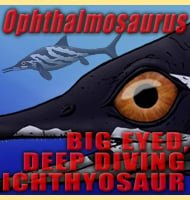In Depth
Although still a primitive horse the teeth of Epihippus show a trend more towards the grinding of grasses over the slicing of plant vegetation like leaves. This is a reaction to the changing ecosystems of the Eocene which saw the beginning of a reduction in forests with their subsequent replacement by grassy plains. This process would go on throughout the forthcoming Oligocene and Miocene epochs, steadily driving horses towards the modern forms we know today. Today Epihippus is widely regarded as being the direct descendent of Orohippus.
Further Reading
Further reading- Introduction and Succession of Vertebrate Life in America. The Popular Science Monthly 12:672-697. – O. C. Marsh – 1878.- New species from the Oligocene of the Uinta. – Annals of Carnegie Museum 21(2):61-78. – O. A. Peterson – 1932.- Phylogeny of North American Equidae. – University of California Publications in Geological Sciences 25(4):165-198. – R. A. Stirton – 1940.









